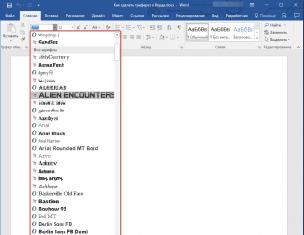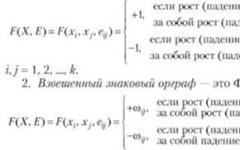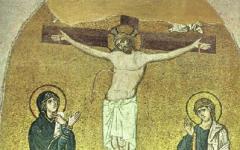В рамках встречи в День Эрмитажа Михаил Пиотровский рассказал, что музей планирует открыть для посетителей три новых зала на первом этаже Нового Эрмитажа, где раньше располагались фонды отдела античного мира. Это стало возможным благодаря вводу в эксплуатацию Запасного дома на Дворцовой набережной (30а), где для отдела подготовлены новые офисы и хорошо оснащённые хранилища. «Собственно, Запасной дом реставрировали для того, чтобы изъять хранилища из залов античного мира, - пояснил директор Эрмитажа. - Когда они переедут, в отреставрированных огромных залах Лео фон Кленце откроются экспозиции. Надеюсь, это будет сделано к концу следующего года».
Речь идёт о трёх новых экспозициях - Зале резных камней, Зале ваз и Галерее. «Залы все очень красивые - это же Новый Эрмитаж! Посетители увидят росписи потолка, искусственный мрамор, гранит, - рассказала Анна Трофимова, заведующая отделом античного мира Эрмитажа. - А помимо интерьеров (притом что это целое крыло, свыше тысячи квадратных метров экспозиционной площади!) - множество ценных экспонатов, которые находились в хранилище».
В конце 2017 года должна открыться экспозиция резных камней, центром которой станет легендарная камея Гонзага, изготовленная в Александрии в III веке до нашей эры. Вместе с ней будут представлены свыше тысячи произведений камнерезного искусства, демонстрирующих сложную технику исполнения и уникальный набор драгоценных камней. Все экспонаты разместятся в исторических витринах и в тех, что подражают историческим. В начале 2018 года будет открыт Зал ваз, где разместится собрание аттических расписных ваз, которое позволит проследить развитие этого искусства, школы и технологии. И, наконец, в конце 2018 года должна открыться Галерея, которую займёт выставка, посвящённая греческим колониям Северного Причерноморья и метрополиям. По словам Анны Трофимовой, эта выставка будет создана интерактивной, с использованием мультимедиа.
It was in Antiquity, when basic forms of the sculptural portrait have been created. However, the study of ancient portrait, appeared in the focus in the second half of the XXth– beginning of the XXIst centuries, led to paradoxical...
It was in Antiquity, when basic forms of the sculptural portrait have been created. However, the study of ancient portrait, appeared in the focus in the second half of the XXth– beginning of the XXIst centuries, led to paradoxical conclusion: Antiquity was a period without portraiture, a society, in which image of the personality was missing, this genre first appeared in the Renaissance. The definition of ancient portraiture, from the point of view of contemporary art theories, indeed, is a subject of controversy. The key categories in interpretation of the portrait are similarity, individual and type, the concept of realism, of mythological and historical. The fundamental difference between ancient portraits and portraits of the later periods, is that the type was always on the basis of the image. This statement applies not only to the general typology, when type corresponds to a certain composition, pose and attributes. Portrait of Socrates is like a Silenus statue, it is well-known visual comparison of Alexander the Great with mythological Gods and Heroes in the portraits. A set of standard types was used in the Greek statues of Athenian citizens and on a relief gravestones. This approach was characteristic of a Roman portraiture. The similarity with a person basically had no importance - the image appeared in the mixture of mythological and individual traits. The second crucial factor that distinguishes an ancient portraiture from the later one - the copying of the original. Replication defines the way of creating sculptures and their perception: a unique becoming the archetype, and not a single work of art. The author led to conclusion of necessity to use art history approach. The sculpture as three-dimensional model is an embodiment of the main and genuine traits of the portrait image. Antique portrait sculpture incorporates the essence of the portrait genre.
Research Interests:
The article is published in: Antike und Klassizismus - Winckelmanns Erbe in Russland / Akten des internationalen Kongresses St. Petersburg 30. September – 1. Oktober 2015 hrsg. von M. Kunze und K. Lappo-Danilevskij. Mainz; Ruhpolding; St....
The article is published in: Antike und Klassizismus - Winckelmanns Erbe in Russland / Akten des internationalen Kongresses St. Petersburg 30. September – 1. Oktober 2015 hrsg. von M. Kunze und K. Lappo-Danilevskij. Mainz; Ruhpolding; St. Petersberg: Verlag Franz Philipp Rutzen, Michael Imhof Verlag, 2017. 296 S., 201 Abb.
The paper is dedicated to the influence of the Winckelmann"s ideas, his writings , his taste and his selection of works to the Hermitage collection of Greek and Roman sculpture. The collection of ancient sculptures of the Hermitage began to take shape after the death of J. I. Winckelmann, the first acquisition relate to 1770m-1780th. However, the influence that the ideas of the German thinker and tenets of classicism had on the nature of the Russian collections of Classical Antiquities was deep and lasting, it lasted longer than in most European countries. Classicism dominated the style of the Hermitage galleries of classical antiquities, the interiors, the display and even methods of restoration. This tradition is revived at all stages of the Museum"s history; in 1770 80th., during the period of creation of the first galleries of ancient sculpture in Russia, in 1850th - during the period of construction of New Hermitage building by the architect Leo von Klenze, and in our days, during reorganization of the galleries of ancient art. In contrast to European museums in Saint-Petersburg this influence is relevant today. Encountered in I. I..Winckelmann and after his death, the cult of the Belvedere torso, the admiration by Niobides group , and other "model sculpture" reflected in the formation of the Hermitage collection.
Research Interests:
В статье дается краткая характеристика коллекции античных портретов знаменитых греков в собрании Эрмитажа - философов, ораторов, поэтов. Характерной особенностью собрания является происхождение памятников из исторических коллекций XVIII-...
В статье дается краткая характеристика коллекции античных портретов знаменитых греков в собрании Эрмитажа - философов, ораторов, поэтов. Характерной особенностью собрания является происхождение памятников из исторических коллекций XVIII- XIX вв. В коллекции присутствуют как широко известные портреты, представленные многочисленными репликами в музеях мира, так и менее изученные. Автор детально исследует герму с поддельной надписью «Геродот» поступившую из собрания Д.П.Кампана. Изучая состояние памятника, а также его воспроизведения и определения в изданиях XIX века, автор воссоздает историю его реставрации, показывая, как из антика был создан образ «отца истории». Исследуя выводы современных ученых относительно памятников, которые можно считать аналогиями к эрмитажной герме (реплика в Прадо и в Музее Дж.Поля Гетти), автор приходит к выводу о том, портрет изображает философа стоической школы, вероятно, Клеанфа. На основании стилистических аналогий портрет датируется 280 г. до н.э, а не второй половиной V в. до н.э. как считал О.Ф.Вальдгауер. Проблемы исследований греческого портрета, показанные на примере гермы, достаточно характерны для античного собрания Эрмитажа. Выводы и результаты исследований будут опубликованы в Корпусе античной скульптуре Эрмитажа – полном каталоге собрания.
Research Interests:
The Hermitage collection of ancient sculpture from the Nothern Black Sea Pontic area demonstrates strong influence of the IVth century BC’ leading Greek sculptors style. The influence of Skopas was especially obvious. It could be...
The Hermitage collection of ancient sculpture from the Nothern Black Sea Pontic area demonstrates strong influence of the IVth century BC’ leading Greek sculptors style. The influence of Skopas was especially obvious. It could be traced in various media such as monumental marble sculptures, statuettes, teracottas, relief decorations. Comparing the data from the collections in the State Moscow Historical Museum, Chersonesos State museum we can examine a number of the objects. They are Greek originals found in Olbia, Pantikapaion, Chersonesos, dated back from the first half to mid-IVth century B.C. as well as Hellenistic versions. It should be noted that some of sculptures has been made from Parian marble. The popularity of Skopas style is closely connected with the local context as tendency to pathetic emotions have been appeared in diferent art-media and subjects for a long period. Beeing imported from the mother sites of Greece and Asia Minor, monuments in Skopas style were convenient to expressivness as peculiar feature of the artistic taste in region and played important role in peripheral art of Greek colonies on the Northern Black Sea shore.
The paper is published in the Proceeding the Third International Conference on the Archaeology of Paros and the Cyclades held in Paroikia, the contemporary capital of Paros, from 11-14 June 2010.
Research Interests:
A typical example of ancient Roman portrait that was undergoing changes in course of several centuries is the so-called “Sallust” held by the Hermitage museum. Inscription on a plinth was recognized to be a fraud, while the bust was...
A typical example of ancient Roman portrait that was undergoing changes in course of several centuries is the so-called “Sallust” held by the Hermitage museum. Inscription on a plinth was recognized to be a fraud, while the bust was attributed to Roman work of the period of Trajan’s reign (early 90s AD or early 2nd century AD). Compared with the renowned items from the Trajan epoch, the Hermitage bust was always notable for its unusual style. Detailed study of the piece allowed the author to prove that the ancient original was reworked and styled as a Republican portrait around 125–150 AD. The greater changers touched upon the face: corrections made the original image strikingly different. Traces of the changes made in antiquity evidently differ from the later ones that were added supposedly in the first half of the 19th century when the sculpture was held by G.-P. Campana. Judging from the genuine areas of the surface, the original style of the piece should be referred to as monumental, more simple, rough, and schematic. Its new version is characterized with exaggerated physiognomic sharp features and glance full of fanaticism, which correspond the idea of the Roman historian Sallust. It is thus not surprising that in the 19th century the name was added to a portrayed person to assign a higher price to the piece.
Research Interests:
t As it comes from the ideas of the leading theorists of art, in the course of the 20th century the category of “Classical” became a key-concept in understanding the development of West-European art. Today’s studies in the history of...
t
As it comes from the ideas of the leading theorists of art, in the course of the 20th century the category of “Classical” became a key-concept in understanding the development of West-European art. Today’s studies in the history of Greek and Roman art meet the problem of its influence, its chronological and spatial transformations. The paper gives an overview of main trends and milestones in art history about Classical antiquity and its legacy telling us in details about today’s scholarly activity at the Hermitage Department of Classical Antiquities. “Classical” expansion to the periphery of oecumene, to the North Pontic area, has been remaining in focus of investigations held by the Russian scientific school. The author points out main characteristic features of the Black Sea version of ancient art, analyzes the patterns of its development, determining the role of the region as a mediator of artistic tradition, not only between peoples, but also between two historic stages of civilization. The second scholarly direction covers Hellenistic studies searching into interaction and conformity between Greek and Oriental art and cultures of Asian countries. The newest field of research is an actively developing history of restoration, while the significant specificity of the Hermitage collection is that the historical restoration should have been preserved in their places.
Research Interests:
The article is dedicated to the small marble head of Alexander the Great from the Hermitage collection. The head was found in Nicomedia and has not been properly published. The author concludes that the head belongs to the type of...
The article is dedicated to the small marble head of Alexander the Great from the Hermitage collection. The head was found in Nicomedia and has not been properly published. The author concludes that the head belongs to the type of Alexander in Pergamon and dated back to the Augustan period.
Research Interests:
Essay is dedicated to the collection of Classical Antiquities of Stroganoff, the Russian aristocratic family. The author research the history of the collection from the 1770th till the 1900th, as well as its historical display. The...
Essay is dedicated to the collection of Classical Antiquities of Stroganoff, the Russian aristocratic family. The author research the history of the collection from the 1770th till the 1900th, as well as its historical display. The article is a part of the catalogue of the temporary exhibition
Research Interests:
The catalogue of the exhibition is devoted to Alexander the Great, his Eastern campaign and its consequences on East and West. More than 350 objects from the collections of the State Hermitage museum spanning the period more than 2...
The catalogue of the exhibition is devoted to Alexander the Great, his Eastern campaign and its consequences on East and West. More than 350 objects from the collections of the State Hermitage museum spanning the period more than 2 500 years, from the 5 century BC to the 19 сentury. The show tells us the story about meeting of great civilizations - Hellenistic states, ancient Oriental empires, the world of nomads. Stepping on fareway land Alexander and his army brought with them Hellenistic culture. This influense spread in huge territory - from Greece to India, Mongolia and China. Historic role of Alexander in shaping the fortune of the world, .The subject of the research is the historical role of Alexander Hellenism as global process of cultural interaction are the main topic of the exhibition Authors of the articles and entries of the catalogue are historians of Ancient East and those of Classical history, archeologists, linguists, historians of art of the State Hermitage Museum and Saint-Petersburg State University.
Research Interests:
The article concerns the conception of renewal of the permanent display of ancient art and culture in the State Hermitage museum. The key idea of the conception is to keep neo-classical style following idea of Leo von Klenze. The...
The article concerns the conception of renewal of the permanent display of ancient art and culture in the State Hermitage museum. The key idea of the conception is to keep neo-classical style following idea of Leo von Klenze. The article is published in the Proceeding of the conference "Museum in the 21st century. Restoration, reconstruction, renovation reconstruction", St-Petersburg, 2012
Research Interests:
Публикация посвящена архаическим статуям кор, найденным на Афинском акрополе. Автор дает развернутую характеристику этой знаменитой художественной группы скульптур, рассказывая об их назначении, контексте, центрах производства,...
Публикация посвящена архаическим статуям кор, найденным на Афинском акрополе.
Автор дает развернутую характеристику этой знаменитой художественной группы скульптур, рассказывая об их назначении, контексте, центрах производства, художественных особенностях, раскраске статуй и значении образа коры для истории греческого искусства. Особое внимание уделено статуе Коры № 670, представленной на временной выставке в Эрмитаже.
Research Interests:
В монографии впервые в отечественном и зарубежном искусствоведении исследован феномен влияния портретов Александра на изображения героев и богов в искусстве эллинистической эпохи; понятие "тип Александра" разработано применительно к...
В монографии впервые в отечественном и зарубежном искусствоведении исследован феномен влияния портретов Александра на изображения героев и богов в искусстве эллинистической эпохи; понятие "тип Александра" разработано применительно к стилистической эволюции. Монография рассматривает историографию портретов Александра Македонского и "проблему имитаций" в контексте эпохи эллинизма и образы основных мифологических персонажей, испытывающих воздействие иконографии Александра (Ахилл, Геракл, Дионис, Гелиос, гиганты, водные божества). В эпоху эллинизма - завершающую, переломную фазу в истории классической художественной традиции - тип Александра нашел форму выражения в мифологических образах одновременно с утверждением системы новых ценностей и представлений
Research Interests:
Александр Великий. Жизнь образа в мировой культуре. Материалы конференции 18.04.2007. Науч. ред. А.А. Трофимова.прошедшая в Государственном Эрмитаже, была приурочена к временной выставке «Александр Великий. Путь на Восток» (13 февраля -...
Александр Великий. Жизнь образа в мировой культуре.
Материалы конференции 18.04.2007. Науч. ред. А.А. Трофимова.прошедшая в Государственном Эрмитаже, была приурочена к временной выставке «Александр Великий. Путь на Восток» (13 февраля - 1 мая 2007 года, залы Невской анфилады Зимнего дворца) [см. каталог]. На конференции обсуждался широкий круг тем, как представленных на экспозиции, так и не затронутых на выставке и в каталоге. В центре внимания - мультикультурный аспект восприятия образа Александра Великого в эллинистической и постэллинистических традициях Востока, Запада и России, в историографии, литературе, искусстве, идеологии, религии, фольклоре. В конференции приняли участие сотрудники Государственного Эрмитажа, кафедры Древней Греции и Рима исторического факультета и кафедры иранской филологии Восточного факультета Санкт-Петербургского государственного университета, Государственного университета Саратова, Московского государственного педагогического университета (Самарское отделение), Российского института истории искусств и Государственного Русского музея
http://kronk.spb.ru/library/trge.htm
// СПб: Изд-во Гос. Эрмитажа. 2012. 136 с. ISBN 978-5-93572-444-3
Research Interests:
Accompanies an exhibition at the State Hermitage Museum, St. Petersburg, from September 23, 2011- January 15, 2012 This book is made up of nine classical sculptures from the Hermitage Museum, removed from their plinths and repositioned...
Accompanies an exhibition at the State Hermitage Museum, St. Petersburg, from September 23, 2011- January 15, 2012
This book is made up of nine classical sculptures from the Hermitage Museum, removed from their plinths and repositioned to share a raised floor with the viewer; and seventeen highly abstracted body-forms by Antony Gormley. The idea is to juxtapose ancient, idealized statues with Gormley"s more disinterested sculptures and see whether, in Gormley"s work, the abstract language of Euclidean geometry can make a shelter for feeling, and whether, in the case of the classical works, demounting and putting the viewer on the same level as their original makers can re-establish them as made things. The interaction of the public, captured in documentary photographs, is key to a project that aims to show how classical marbles, Gormley"s own sculptures and the living human visitors inhabit the same space and can converse with each other.
Research Interests:
No ruler in antiquity appeals to the imagination as much as Alexander the Great. From his youth he inspired the people around him. Alexander followed in Dyonysus" footsteps and reached Syria, Egypt, Persia, Bactria and India. Everywhere he founded new capitals. Many of them he named Alexandria. He left behind a legacy of Greek culture in the form of Hellenism.
Research Interests:
For the first time in Classical studies, the author of this monographic research investigates the influence of Alexander the Great portraiture upon iconography of heroes and deities in the Hellenistic art. Historiography of Alexander" s...
For the first time in Classical studies, the author of this monographic research investigates the influence of Alexander the Great portraiture upon iconography of heroes and deities in the Hellenistic art. Historiography of Alexander" s portraits and the problem of imitation are under consideration, the principal mythological characters that underwent the impact of Alexander" s iconography being precisely studied - Achilles, Heracles, Dionysus, Helios, the Giants, and water deities. The author comes to a conclusion: Imitatio Alexandri was a natural stage in the development of Hellenistic artistic parlance. Imitation of Alexander" s appearance embodied several key concepts: invincible, defender of the Greeks, king of the East, conqueror of Asia, liberator, founder of cities, king, or simply the finest of the Hellenes. It was in the Hellenistic time - the final and the turning phase in the history of Classical artistic tradition - that the new myth-eidos found its mode of expression in mythological models simultaneously with the consolidation of new values and concepts.
Research Interests:
The ‘Art of Portrait’ provides a unique opportunity to represent the most striking chapters in the world history of portrait. This is the first time such an exhibition has been organised, and its main idea is to show the genre against the...
The ‘Art of Portrait’ provides a unique opportunity to represent the most striking chapters in the world history of portrait. This is the first time such an exhibition has been organised, and its main idea is to show the genre against the background of its historical development: the origins and functions of the portrait, its main types, and the language of portrait forms. The evolution of portraits is viewed from a large-scale perspective, from the 20th century B.C. to the 21st century A.D., from origins to our own time. The display is divided into four sections: The Proto-Portrait Period and the Art of Ancient Egypt, 20th c. B.C. – 1st c. A.D. (Room 2); The Art of the Antiquity and Early Middle Ages, 6th c. B.C. – 10th c. A.D.; The Art of Western Europe, the East, and Russia in the Late Middle Ages, Renaissance, and Modernity, 11th-18th cc.; The Art of Western Europe, the East, and Russia from Modern Times to the Present Day, 19th-21st cc. Within each section, works produced in different countries are displayed side by side. This approach makes it possible to consider the forms of portrait prevalent at a certain historical junction, to understand the changing trends and immutable features, to appreciate the cultural differences in the perception of a human being
The ‘Art of Portrait’ provides a unique opportunity to represent the most striking chapters in the world history of portrait. This is the first time such an exhibition has been organised, and its main idea is to show the genre against the background of its historical development: the origins and functions of the portrait, its main types, and the language of portrait forms. The evolution of portraits is viewed from a large-scale perspective, from the 20th century B.C. to the 21st century A.D., from origins to our own time. The display is divided into four sections: The Proto-Portrait Period and the Art of Ancient Egypt, 20th c. B.C. – 1st c. A.D. (Room 2); The Art of the Antiquity and Early Middle Ages, 6th c. B.C. – 10th c. A.D. (Rooms 3-4); The Art of Western Europe, the East, and Russia in the Late Middle Ages, Renaissance, and Modernity, 11th-18th cc. (Room 5); The Art of Western Europe, the East, and Russia from Modern Times to the Present Day, 19th-21st cc. (Room 6). Within each section, works produced in different countries are displayed side by side. This approach makes it possible to consider the forms of portrait prevalent at a certain historical junction, to understand the changing trends and immutable features, to appreciate the cultural differences in the perception of a human being
The Department is comprised of two sectors: the sector of Ancient Greece and Rome and the North Black Sea Region sector. The Department’s collections number over 170,000 items. The Department has thirty employees. Head of Department: Anna Trofimova.
The Hall of Hercules
In the Reading-room of the Library
The Office of the Head of the Department of Classical Antiquities
The Library of the Department of Classical Antiquities
Storage of the Department of Classical Antiquities. Ceramics from the excavations in ancient Panticapaeum (present-day Kerch)
The Exhibition of the Hall of the Northern Black Sea Region
The Exhibition of the Hall of Hellenism
The Hall of Augustus
The Department of the Ancient World is one of the oldest in the Hermitage. From 1805, collections of antiquities and a staff of curators formed part of Departments I and II of the Imperial Hermitage. A new Department of Antiquities was founded after a staff reform of 1863. In 1919, it was subdivided into the Department of Greek and Roman Antiquities and the Department of the South Russian Archaeology. In 1930, it was renamed the Department of the Ancient Society, and it has been known as the Department of the Ancient World since 1941.
The gathering of antique collections pre-dates the foundation of the museum by a long time. It was Peter the Great who ordered the first ancient sculptures to be purchased and brought to Russia in 1719-1720. These included the famous Venus of Taurida. In the second half of the 18th century, the passionate collecting drive of Catherine the Great created the core of the antique collection; carved gems were bought from European and Russian aristocratic families, including Louis Philippe Duke of Orléans, the Medici family, Louis de Breteuil, G.B. Casanova, P. Crozat, and a collection of ancient sculptures was bought from John Lyde Browne in 1785-1787. An important landmark in the history of the Classical antiquities was the opening of a public museum in 1852 in the New Hermitage building, specially commissioned by Emperor Nicholas I.
The architect Leo von Klenze designed the interior decoration to match the works of art displayed in the rooms. The New Hermitage became the home of antiques from Tsar residences as well as collections bought from the Pizatti, Demidov, Laval families. In 1861, the acquisition of Giampietro Campana’s collection made the Hermitage a major European museum of classical antiquities; they occupied all the ground-floor rooms in the New Hermitage building. Apart from acquisitions, another important source of ex-hibits for the collections were the archaeological excavations carried out since the early 19th century in the former Greek colonies along the Black Sea coast. The Imperial Archaeological Commission was formed in 1859 to oversee the excavations, prepare re-ports, publish and distribute the finds. The best pieces were sent to the Hermitage. The collection took final shape after the Revolution (in the 1920s and 30s) when it was centralised and augmented by the addition of antiques from nationalized private collections, suburban palaces, museums of the Academy of Fine Arts, the Academy of Sciences, the Central (Stieglitz) School of Technical Drawing and others.
Today, the Hermitage collection of Classical antiquities numbers over 170,000 items. The most important among them are the painted vases, carved gems, ancient sculptures, archaeological finds from the North Black Sea coast, along with ancient jewellery, terracotta and bronze pieces. The exhibitions of ancient art take up twenty two rooms or the entire ground floor of the New Hermitage Building and the Sivkov linking passage. Since 1998, the Department has been carrying out a Program of renovation of its permanent display. Within the framework of this program, interior restoration and renovation of exhibitions in twenty galleries has already been completed. The exhibition programm aims to preserve the style of a 19th-century museum and to create new permanent displays of ancient art in the New Hermitage that would combine the air of Neo-Classicism with the latest academic and conservation practices.
Between the early 19th and the early 21st century, generations of scholars have studied the Classical heritage and created the Hermitage school of Classical studies. The key research areas are related to the contents of the collections and the academic traditions of museum-based Classical scholarship: the study of painted ceramics, Greek and Roman Sculptures, carved gems, jewellery, research into the history of collecting; developing the theory and practice of exhibiting ancient historic collections, archaeological excavations and the academic conservation of antique artefacts discovered in the South of Russia. The Department produces numerous and diverse publications; in the recent decade, one of its key productions was the regular publication of its materials in two international series: the Corpus of Ancient Vases and the Corpus of Ancient Sculpture. The catalogues of the Berezan collection and the Cypriot antiquities have now been published alongside works on ancient weapons and armour, coroplastics, history of collecting, and a separate branch dedicated to the study of Hellenistic art.
A number of temporary exhibitions organised by the Department have received wide international recognition: “Greeks on the Black Sea” (2006), “Alexander the Great: the Journey to the East” (2007, 2010, 2012). Conferences held by the Department were well received by the international museum community; among them are “The Bosporan Phenomenon”, “World Museums in the 21st Century: Restoration, Reconstruction, Re-Exhibition”. Long-term international cooperation programmes are in place under agreements with the Restoring Ancient Stabiae Foundation, the Institute of Archaeology, University of Lausanne, the German Archaeological Institute and others.
The Department has six working archaeological expeditions: Berezan, the Classical Complex, Myrmekion, Nymphaion, Chersonessos, and Stabiae (since 2006); the latter is the first Russian expedition in Italy.
The Department pays a lot of attention to education. The “Days of Classicism” annual festival for children and young people has been held in the Rooms of Antiquities since 2006. It is organised by the Department employees and is very popular with school-children. The majority of the Department’s curators teach Classical Art History at St Petersburg universities, institutes, gymnasia and colleges.








